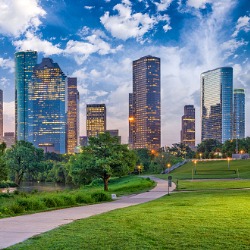A watershed is a topographically formed catchment area on land, which rain falls or melting snow pack flows. Water not used by surrounding vegetation in the catchment area isn’t held, but infiltrates into the ground to ultimately flow and reach nearby streams and rivers that drain the watershed.
When soil becomes saturated from falling rain or melting snow pack, excess water will either percolate deep into the ground or run off the surface. Vegetation and plants greatly affect water storage on any particular site. Shallow-rooted annual grasses, deep-rooted perennial grasses, shrubs, or trees use water at varying depths in different soil profiles. When irrigating, using a soil moisture sensor that’s capable of measuring volumetric soil moisture changes of less than 0.1 percent ensures accurate watering every time.

Groundwater basins underlying catchment areas are linked to the hydrologic cycle within the watershed, as they store seeping water from the catchment area above. Unfortunately, pollution from runoff and erosion is damaging the health of watersheds. Poorly managed watersheds are polluted with runoff of animal waste and herbicides used in landscaping, and spread over wheat fields and cornfields. As a result, water sources fed by polluted watersheds may not be suitable to drink, fish that’s caught there may not be safe to eat. And water may not even be safe enough to swim in.
So what can be done to remedy this? Here are a few things we can all do to help keep our watersheds clean and healthy.
- Don’t pour toxic household chemical down the drain. Take them instead to a hazardous waste center.
- Never pour used oil or antifreeze into storm drain or street.
- Don’t use pesticides in your gardening, and only use organic, slow-release fertilizers.
- Recycle yard waste in a compost pile and use a mulching mower.
- Pick up after your dog and dispose of waste in the toilet or trash.
- Use landscaping plants that require little watering to prevent runoff that causes erosion. Planting more drought-tolerant plants can also help lessen the amount of water you use. In addition, most landscape is overwatered, so deploying a smart irrigation controller with more accurate watering – gives landscape only the water it needs and no more.
Watersheds are vital to sustaining life. They feed bodies of water that supply our drinking water, and provide water for agriculture, manufacturing and recreation. Watersheds also serve as natural habitats for various animals and plants. So it’s critical that we protect our watersheds to keep them clean and healthy.

